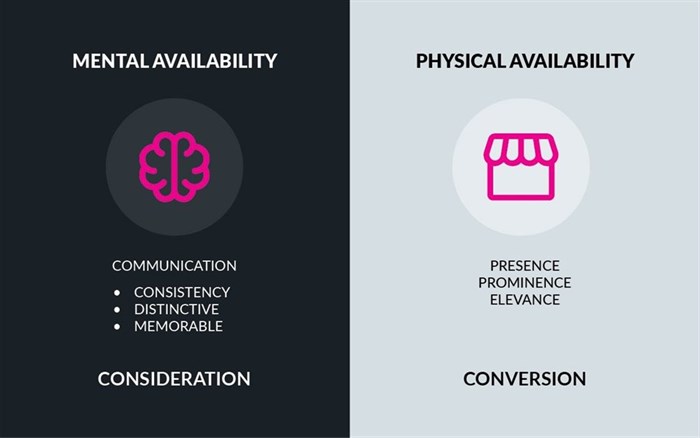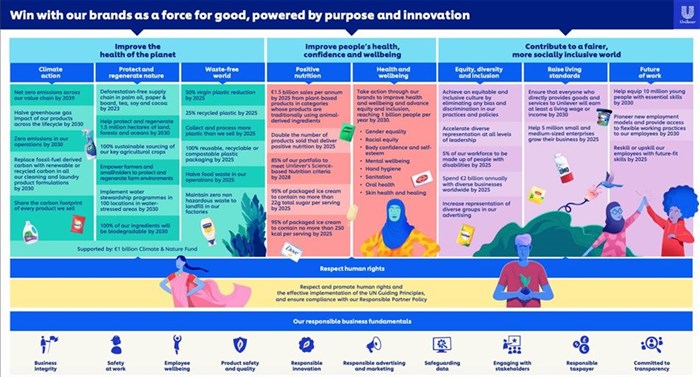#BizTrends2024: 2024 shopper marketing – how can we win?

Spend within luxury goods is down, and private label is up, suggesting people are looking for more value brands.
It is more important than ever for (shopper) marketers to look at strategies that go beyond pricing strategies and understand how we can pull other levers. Intelligent, effective marketing will help you fight share of voice and share of wallet.
What are we likely to see in 2024?
Back to basics
How will brands connect with consumers in a sea of endless choices and limited means? We will likely see a back-to-basics approach. How do marketers build mental availability with consumers?
They must ultimately ensure that at the moment of purchase, brands are truly in the consideration set, and that starts long before a person gets into a store (online or offline), whether for a B2B SaaS product, a consumer-packaged goods company or a retailer. Building a share of emotion in consumers will ensure they choose your brand at the right time.

Localisation
Big brands in emerging markets are looking to localise in those markets, working with partners who can support this. This real drive exists to understand and support local suppliers, experts, and people. There’s de-dollarisation in many markets where countries try to reduce their over-reliance on the US.
The impact for brands is that they must trade in local currency, reduce transport, and impact freight costs to meet ESG goals. Global brands are looking to local production and relooking supply chains, bringing them closer to the markets they’re serving; marketers need to know that they can support the brands they serve in the markets that are important to them.
A commitment to purpose and sustainability
Businesses are furthering their commitment to using their businesses for good. It’s no longer simply about running advertising campaigns around sustainability or CSI work clients are already doing.
Clients are working with marketing agencies to reduce their emissions under scope three across their supply chain, with programmes that can all be measured, tracked, and implemented against UN and internal sustainability goals.
This is already happening in the shopper marketing space, and undoubtedly, there will be more of this across creative and digital agencies, too. Clients will also question what marketing agencies are doing in their organisations to drive sustainability.
Unilever, as an example, has purpose baked into its business approach. Global brands are leading the charge in solidifying this as part of their business strategy rather than simply doing the bare minimum.
Move beyond theoretical AI to rapid adoption of practical AI
Brands and retailers must adapt channels and strategies to the consumer, and AI can help them meet these challenges.
For businesses to succeed and win in 2024, they need a solid AI mission, strategy or win factors. A key question for leaders and decision-makers will be: “What are the things we can focus on this year in AI for our organisation that will push us into the winning zone?”.
For retailers and consumer packaged goods companies, that means a much larger focus on personalisation, learning to target more effectively, having a first-party data strategy, understanding how to customise product delivery and products more effectively and making company operations much more streamlined with tasks that can be automated.
A great example of a retailer innovating in this space is CTM. They have automated their sales process and reduced processing time from 30 minutes from purchase to sale conclusion to five minutes. Now, shoppers can walk into a CTM and purchase tiles directly from the floor.
The automated handheld POS system will ask if you want to add grouting, spacers, and delivery. You can see the weight of all materials. This is a game-changer in an industry that has historically worked in a very specific way (just visit their competitors, and you’ll have a vastly different experience).
Then there is the brand of the hour, Checkers. The Checkers60 system is an AI masterpiece. From their website: “The Group developed a machine learning algorithm to dynamically define optimal delivery regions. The solution overlays a map with the spatial-temporal view of orders while using order data to determine the optimal delivery area for each store.”
They also use powerful supply chain AI software to ensure accurate orders, and they use machine learning to look at current floor plans and tweak the location of shelves and tills.

The Shoprite Group continues to create the best possible customer shopping experience through artificial intelligence. Image Credit: Shoprite Holdings
But it’s not just consumer-facing brands that have to adopt AI. Every organisation (including agencies) must rethink how to adapt it to keep up with the demand it has now placed on organisations. Small, simple changes can have massive impacts – reduced hours spent on creative, decreased planning cycles, creative testing, etc. Marketers and advertisers must lead the charge in this space, not trailing their clients.
In conclusion, the shopper marketing landscape in 2024 is marked by global challenges, including reduced consumer spending, a shift towards value brands, and the need for marketers to explore strategies beyond pricing. Key trends for the year ahead include:
- A return to basics in brand-building
- A focus on localisation and sustainability
- A significant emphasis is placed on practical AI adoption for personalised and efficient consumer engagement
Businesses, both consumer-facing and within agencies, must adapt and innovate to succeed. The examples of CTM and Checkers demonstrate the transformative power of AI in reshaping industries.
In this evolving landscape, organisations of all sizes must embrace change and adopt fundamental shifts in their approach to thrive in 2024.















